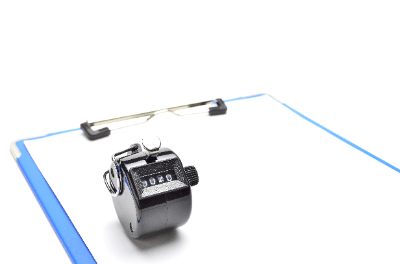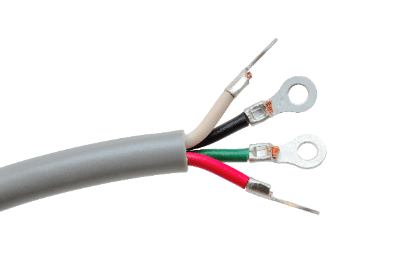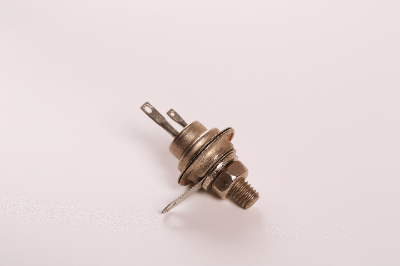What Is a Trimmer Capacitor?
A trimmer capacitor is a variable capacitor used for fine-tuning circuits and compensating for component variations.
The capacitance is adjusted by mechanically turning a knob with a screwdriver. They are also called semi-fixed capacitors because they are set during manufacture or service and are not shifted once they are in use. Mostly used for surface mounting, they are basically chip-type or round. They are often used to adjust the oscillation frequency of quartz crystal units.
Trimmer capacitors use the capacitance method, and capacitance can be adjusted by changing the effective surface area between electrodes, the distance between electrodes, or both.
Uses of Trimmer Capacitors
Trimmer capacitors are often used in oscillation and radio circuits, including quartz crystals, for frequency adjustment. Examples include keyless entry for automobiles, automatic ticket gates at train stations, handheld radios, power amplifiers, and RF modules for Bluetooth.
Other applications include radios, clocks, electronic pens for PCs, DVDs, hybrid ICs, and surveillance cameras. Nonmagnetic trimmer capacitors are often used in medical equipment such as MRIs.
Principle of Trimmer Capacitors
Trimmer capacitors have variable capacitance within a certain range. Like an ordinary capacitor, an insulator is sandwiched between two electrodes, which store an electric charge when a voltage is applied. The capacitance can be adjusted by moving one of the electrodes.
Air or ceramic is used as the dielectric. Trimmer capacitors have a small capacitance at the pF level because their structure does not allow them to be made with a large capacitance. Movable electrodes are often round in shape and can be shifted by rotating them with a knob or similar tool, using the center axis or outside of the electrode as a guide.
Since the surface area of the displaced electrode changes, the capacitance can be varied. During the initial setup, a screwdriver is used to adjust according to the application. Once adjusted, the capacitance is basically fixed and used without changing. When adjusting with a screwdriver, care should be taken not to apply excessive force as it may cause damage.
Structure of Trimmer Capacitor
The structure of a trimmer capacitor is the same as that of a general capacitor, except that it has a screwdriver slot and a metal rotor for adjustment. Note that because of this structure, if the soldering iron adheres to any part other than the terminal area, flux solder may enter the variable area and fix the rotor or prevent it from making contact.
Also, if the tip of the soldering iron touches the covered trimmer capacitor, it may melt or damage the capacitor.
Other Information on Trimmer Capacitors
1. How to Adjust Trimmer Capacitor
To adjust the trimmer capacitor, use a screwdriver to rotate the rotor to the desired capacitance setting. There are two types of screwdrivers for adjustment: one for manual adjustment and the other for automatic adjustment.
Ensure that the screwdriver is placed in the groove for the driver, and after a preliminary rotation of 360° or more, set the capacitance. When adjusting with a screwdriver, it is recommended to use a load of 1N or less. Applying a load greater than this may result in damage or loss of function.
The stray capacitance when adjusted with a screwdriver can be reduced by attaching the negative terminal to the ground of the circuit.
2. Colors of Trimmer Capacitors by Capacitance Rank
Some trimmer capacitors have different color cases according to their capacitance ranks. The color classification differs depending on the manufacturer, but the following are some examples:
- Capacitors with a maximum capacitance (pF) of 3.0 +50/-0% are brown in appearance.
- Those with a maximum capacitance (pF) of 6.0 +50/-0% are blue in appearance.
- 10.0 +50/-0% of maximum capacitance (pF) is white.
Some capacitors have not only colors but also indications as shown below:
- Those with a maximum capacitance (pF) of 50.0 +100/-0% have a black exterior + indication
Indication will include the shape of the terminals and whether or not a cover film is used. Thus, color-coded trimmer capacitors allow the eye to easily determine the capacitance, thus reducing the risk of using the wrong one.

 A solderless terminal is a type of terminal material used at the end of an electric wire. Solderless terminal is a method of mechanically joining a wire to a terminal by plastic deformation using a tool or other means.
A solderless terminal is a type of terminal material used at the end of an electric wire. Solderless terminal is a method of mechanically joining a wire to a terminal by plastic deformation using a tool or other means.